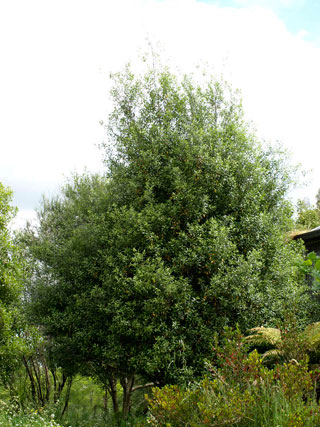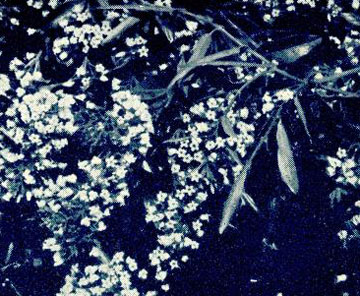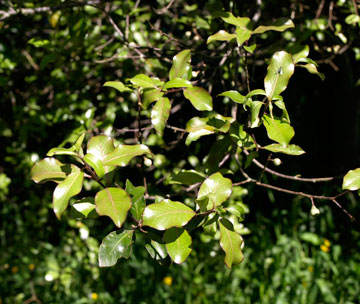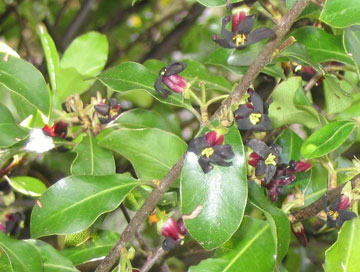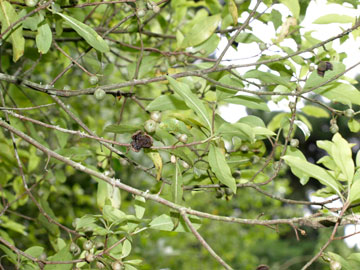NOTE - THIS PROTO-PAGE IS STILL IN THE EARLY STAGES OF CONSTRUCTION!
This name originated in Tahiti, after the split between the Tahitian and Marquesan branches of the Eastern Polynesian language whänau, but probably before the discovery and settlement of Aotearoa. In Tahiti it designates a number of shrubs and scrambling plants which have scented flowers and/or foliage. One of these, known botanically as Alyxia scandens, quite possibly the first plant to receive this name, belongs to the same botanical plant family as the New Zealand Jasmine, Parsonsia heterophylla, one of the two New Zealand plants to receive this name. Looking at all these plants, local and tropical Polynesian, the attributes they share seem sufficient to make them a natural grouping to receive a common name.
Both the New Zealand plants have other names, some more in common use than the shared one.
Pittosporum tenuifolium is a small tree growing up to 9 metres high, with delicate branches and fragrant dark red flowers. There are many horticultural varieties grown in New Zealand gardens and parks, and it was important ceremonially in traditional Mäori society. Its branches were used in rituals to impose or remove tapu, promote healing, and welcome visitors. The oil obtained from its fruits was used for carrying scents and its leaves also were reputed to have therapeutic properties. It is known by a variety of names: köhühü (probably the one in most general use), kaikaro, kohukohu, koihu, köwhiwhi, pöwhiri, rautäwhiri, and täwhiri. Williams comments in relation to the latter "so called from its being waved as a demonstration of welcome".
Parsonsia heterophylla is a stout climber (adult stems can be up to 10 cm thick) found especially in damp lowland forests adjacent to wetlands. It has masses of fragrant white or yellowish flowers in spring and summer. Like the Pittosporum, it has a variety of names: kaihua (possibly the most often used), kaiwhiria, poapoa tautaua, tütae kererü (an intriguing epithet), aka kaikiore, akakiore, kaikü and kaikükü.
![]()
 This work is licensed under a Creative Commons Attribution-Noncommercial 3.0 New Zealand License.
This work is licensed under a Creative Commons Attribution-Noncommercial 3.0 New Zealand License.
